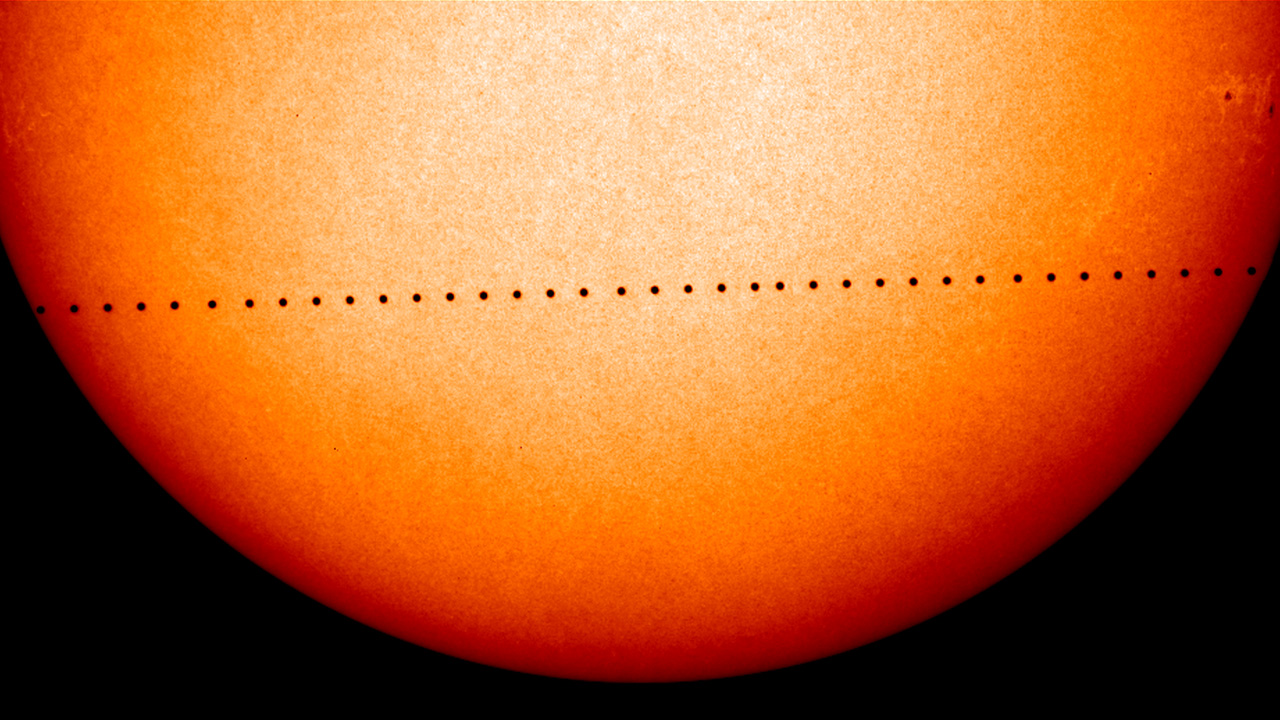Transit of Mercury 2016: NASA Video Explains It All

While scientists are used to seeing sunspots and solar flares crossing the sun's surface, a different kind of spot will pass through on Monday (May 9): the dark shadow of Mercury, which will travel between the sun and Earth that morning.

A new video from NASA sets out what you need to know about the rare celestial event, called a transit, which occurs around 13 times per century, as well as what NASA hopes to learn. Skywatchers who miss Monday's transit will have to wait until November 2019 to catch a glimpse.
Mercury's journey in front of the sun will start around 7:15 a.m. EDT (1115 GMT) and will take more than 7 hours, so even if the sun isn't up yet at the transit's beginning most areas in the Americas, Atlantic and Pacific, Europe, Africa and much of Asia should be able to see part of the event, officials said in the video.
Observers will need to use a telescope with a safe solar filter, or a dedicated solar telescope, to avoid eye damage from the sun. Local observatories and amateur astronomy groups will likely host opportunities to view the transit, and NASA itself and the Slooh Community Observatory will host webcasts of the event highlighting the event's different stages.
During the transit, NASA scientists will have a rare opportunity to study the composition of Mercury's atmosphere — the thinnest in the solar system — as the sun shines through it.
Email Sarah Lewin at slewin@space.com or follow her @SarahExplains. Follow us @Spacedotcom, Facebook and Google+. Original article on Space.com.
Get the Space.com Newsletter
Breaking space news, the latest updates on rocket launches, skywatching events and more!
Join our Space Forums to keep talking space on the latest missions, night sky and more! And if you have a news tip, correction or comment, let us know at: community@space.com.

Sarah Lewin started writing for Space.com in June of 2015 as a Staff Writer and became Associate Editor in 2019 . Her work has been featured by Scientific American, IEEE Spectrum, Quanta Magazine, Wired, The Scientist, Science Friday and WGBH's Inside NOVA. Sarah has an MA from NYU's Science, Health and Environmental Reporting Program and an AB in mathematics from Brown University. When not writing, reading or thinking about space, Sarah enjoys musical theatre and mathematical papercraft. She is currently Assistant News Editor at Scientific American. You can follow her on Twitter @SarahExplains.









